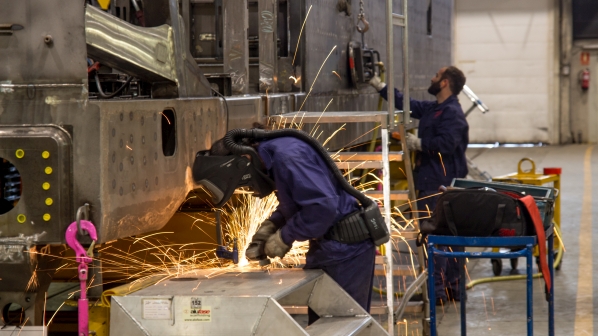The EC says the new European Partnership on Rail Research and Innovation will have a long-term commitment from the European Union and its members “to deliver system-focused solutions ready to enter industrialisation, deployment and operation.”
“This partnership will focus on accelerating research, development and demonstrations of innovative technologies and operational solutions to make rail more attractive, enabled by digitalisation and automation,” the EC says.
The EC will consult with the European Parliament and the Economic and Social Committee before making the proposal for adoption by the European Council to establish the new rail partnership under the EU’s new Horizon Europe research programme.
Membership
The core membership will comprise around 20 organisations representing infrastructure managers, passenger and freight operators, train builders, signalling and infrastructure equipment manufacturers, ICT solutions providers for ticketing and data, and rail research centres.
Members will be expected to contribute about €30m each, of which 5% will go towards running costs. The partnership will also be able to access various European programmes such as the Connecting Europe Facility, Digital Europe Plan, European Regional Development Fund and the Cohesion Fund to fund programmes and projects.
“The partnership will be a catalyst to address present and future challenges in the transport sector and improve mobility of passengers and goods across Europe,” say DG Move directors general, Mr Henrik Hololei and Mr Jean-Eric Paquet. “In order to achieve the most tangible impact for society, the focus should be on harnessing rail for digital and sustainable transformation of our economy and society.”
“We don’t know the funding or the rules of the game yet,” Mr Carlo Borghini, executive director of Shift2Rail, told IRJ. “A possible schedule could be that the proposal will be examined at the European Council meeting at the end of November, followed by around six months of negotiations with member states.” This would enable the new partnership to be established in the second half of 2021. Borghini is keen to see the existing Shift2Rail programmes and staff transfer to the new organisation to avoid a ramp up.
“We want to build on the results already achieved and go to the next level of a system-integrated approach,” Borghini told IRJ. “This will include new methods of operation based on digitalisation, a strong focus on freight, opportunities for high-speed to compete with regional flights, and better urban connections.”

